Archeologists have uncovered a 3500-year-old artifact in an untouched tomb. At first, it may look like nothing, but what they found on the ancient stone is changing history as we know it.

The unearthing of the tomb of the so-called “Griffin Warrior” near the ancient city of Pylos in southwest Greece led archeologists to a treasure trove of discoveries that give us a fascinating glimpse into the past. Among the tomb belonging to the “Griffin Warrior,” a super wealthy ancient Mycenaean warrior, were impressive pieces of armor, weapons, and jewels. However, one piece that almost went unnoticed could rewrite the history of art as we know it.
Although the tomb was originally discovered in 1930, legal issues with the Greek government limited excavations until recent years. The tomb has finally been unearthed, and archeologists from the University of Cincinnati were excited to finally discover what secrets it had been hiding among the remains of the powerful Myceneaen warrior and his treasure trove of burial riches.
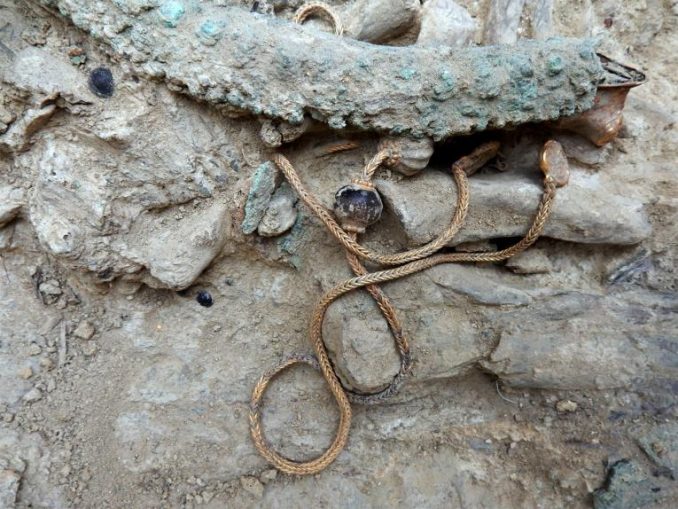
After some three dozen researchers worked together to meticulously dig out the Griffin Warrior tomb near the ancient Palace of Nestor, taking many months to uncover many of the treasures, they finally revealed their stunning discoveries.
Among the more than 3,000 objects arrayed on and around the warrior’s body were silver cups, gold rings, precious stone beads, fine-toothed ivory combs, an intricately built sword, and other weapons, but perhaps the most amazing of them all was one gem, dating back to 1,500 BC, that was particularly shocking.
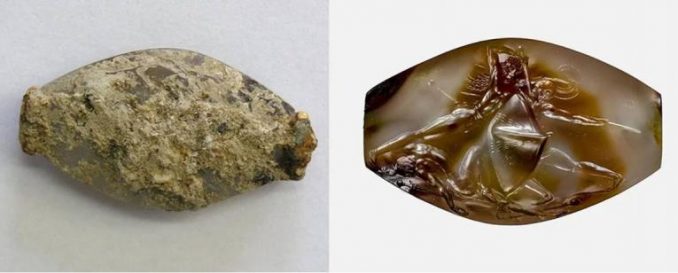
The agate stone at first seemed fairly insignificant as it was stuck in limestone. However, after a year of careful restoration, researchers finally uncovered something underneath the limestone that would leave them stunned beyond belief.
The stone had been intricately carved with a design featuring two warriors in a Greek battle clashing against each other fiercely with one fallen warrior at their feet. One bare-chested warrior plunges a blade into the neck of an assailant, while a second enemy corpse lays at his feet.
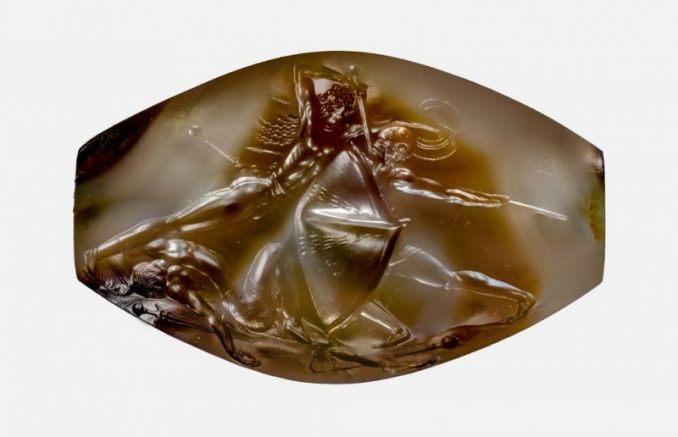
“The seal, named the ‘Pylos Combat Agate’ has been hailed as one of the finest works of prehistoric Greek art ever discovered and may depict the mythological war between the Trojans and Mycenaeans, which was told in Homer’s Iliad hundreds of years later,” The Telegraph reported.
The stone is only about 3.6 centimeters or 1.4 inches wide, and some of the details in the design are only 1/2 a millimeter or 1/100 of an inch. It would have been used as a seal, making an impression in wax, but how the artist was able to make such a detailed carving on such a tiny canvas with ancient tools had everyone in awe.

Depicting human bodies in such anatomical detail was thought to be way beyond the skill of Bronze Age artisans, yet the artist’s carving is positively flawless with an incredible level of detail put into the tiny scene.
Even more incredible, many of the details such as the ornamentation on the shields and jewelry are too small to be viewed with the naked eye. It baffles researchers, who have no idea how ancient craftsmen were able to create the minute scene without microscopes.
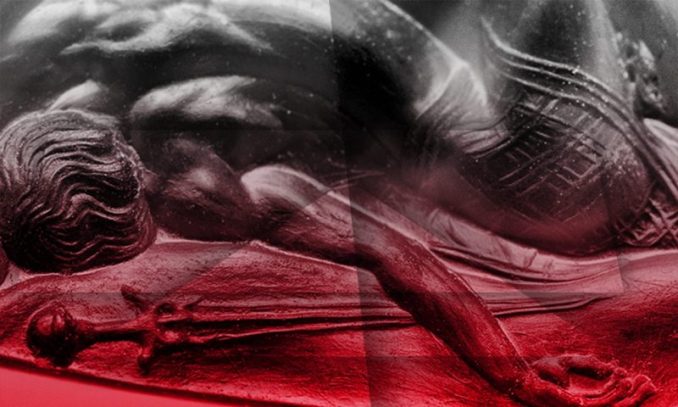
Researchers are now trying to figure out how ancient craftsmen were able to create such intricate designs with the tools they had available. The discovery has also turned the art history world on its head because a piece like this was unheard of during that time period.
“What is fascinating is that the representation of the human body is at a level of detail and musculature that one doesn’t find again until the classical period of Greek art 1,000 years later. It’s a spectacular find,” Jack Davis, Professor of Greek Archaeology at the University of Cincinnati’s Department of Classics, explained. “Some of the details on this are only a half-millimeter big, they’re incomprehensibly small,” he furthered.
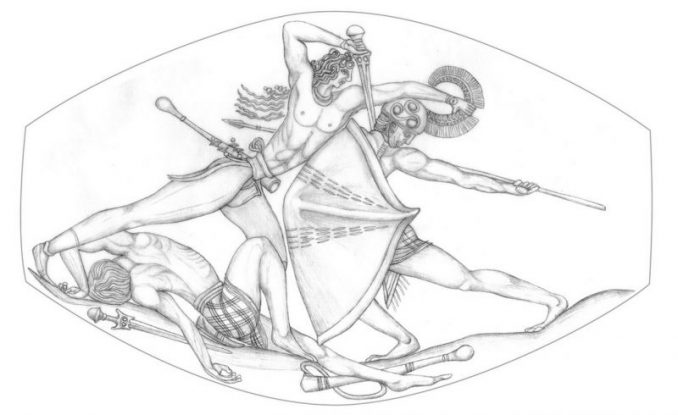
“It seems that they were producing art of the sort that no one ever imagined they were capable of producing,” Professor Davis continued. “It shows that their ability and interest in representational art, particularly movement and human anatomy, is beyond what it was imagined to be. Combined with the stylized features, that itself is just extraordinary.”
“Looking at the image for the first time was a very moving experience, and it still is,” dig leader Shari Stocker of the University of Cincinnati’s Department of Classics said. “It’s brought some people to tears. It would have been a valuable and prized possession, which certainly is representative of the Griffin Warrior’s role in Mycenaean society.”
“This seal should be included in all forthcoming art history texts and will change the way that prehistoric art is viewed,” Stocker concluded, proving that even the most accepted facts about human history can be changed with one small discovery.
With over 3,000 objects unearthed from the tomb, many are still being worked on and examined, and we can only wonder what other surprises await. Who knows what else has yet to be uncovered that could rewrite history as we know it.
Source: Tap Worthy Happenings
0 Comments